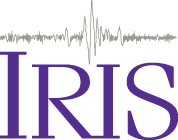IRIS and UNAVCO Boards of Directors Submit ‘Guiding Principles’ Letter to NSF
View the letter as a PDF
 |
|
To: Greg Anderson and Russ Kelz, NSF Earth Sciences
From: IRIS and UNAVCO Board of Directors
Date: 24 April 2015
Re: NSF SAGE – NSF GAGE Guiding Principles
Cc: Jim Whitcomb NSF Earth Sciences, Carol Frost NSF Earth Sciences, and Roger Wakimoto NSF Geosciences
Over the last several months, the IRIS and UNAVCO Boards of Directors have spent time reflecting on the key attributes and characteristics that have made NSF SAGE and NSF GAGE so successful in providing facilities and services to the seismic and geodetic communities, and the allied geoscience disciplines and mission agencies relying on results and data from these multi-user facilities. Recognizing that the NSF will recompete the management of the NSF SAGE and NSF GAGE facilities in 2018, we want to share with you the essential qualities that we believe have been the foundation of the remarkable advances achieved by the seismic and geodetic communities and other stakeholders relying on these facilities.
We hope that the guiding principles outlined below will be incorporated into the NSF SAGE and NSF GAGE RFPs so that the organizations selected to operate and manage these facilities beyond 2018 will continue this record of success. These principles include:
- Research and educational mission: The scientific discoveries that have come from the facilities and services provided by NSF SAGE and NSF GAGE have fundamentally changed the way we view and understand our planet and have inspired a generation of students to become geoscientists. It is critical that the core mission of these facilities remains support of cutting edge geoscience research and education to drive scientific innovation and to serve society.
- Not-for-profit management: The management of these facilities must be responsive and accountable to stakeholders within the diverse science and education communities these facilities support, not shareholders whose highest priority is profit margins or short-term return on investment.
- Community oversight and governance: This guidance and oversight is essential for ensuring that these facilities remain cutting-edge and continue to serve the highest priority needs of the scientific community. While the NSF SAGE and NSF GAGE facilities are foundational to the seismic and geodetic communities, the facilities also serve the broader Geoscience community (OCE, PLR and AGS, as well as across EAR) and mission agencies (e.g., DoE, USGS, NASA, etc.) in important ways. Responsiveness to broad community needs and an ability to support forward-looking innovation is critical.
- Focused service to stakeholders: The seismic and geodetic scientific communities have distinctly different needs and interests; combining the NSF SAGE and NSF GAGE facilities would compromise these interests. Where overlapping interests and synergy exist, scientific and operational coordination and collaboration between managing organizations should be expected for efficiency and effectiveness.
- Integrated end-to-end services: Management of the activities and tasks the facilities oversee, from data acquisition to data management and archiving to delivery of data and products to the desktops of scientists, educators, and other end users, needs to be integrated. End-to-end integration reduces operational costs; ensures data and metadata integrity; streamlines all aspects of data collection, metadata handling, quality control, services, and command and control of systems; is integral to the evolution of instrumentation and services to meet the needs of end users. Breaking the management of individual activities (e.g. data acquisition or data archiving), into separate tasks for separate entities to bid on and manage would undermine efficiency, effectiveness, and quality and ultimately negatively impact the community’s ability to make scientific advances.
- Open data policy and formats: Data in standard formats must be freely and openly available to any interested user. This principle, pioneered by the seismic and geodetic communities, but now emerging throughout the earth sciences, is essential to maintaining a healthy and vibrant science community and facilitating the use of these facilities for a wide range of applications.
- Both portable (temporary) and permanent observing capabilities: The temporal and spatial scales of the Earth processes under investigation require the ability for long-term permanent observatory grade observations as well as portable temporary deployments.
- Capabilities to acquire data in extreme environments: The science questions driving investigations require capabilities to operate in the oceans, polar regions, tropics, high-elevation, and on extraterrestrial planets.
- Highly skilled professional technical and administrative staff: The level of activity and performance standards requires a highly skilled, dedicated, professional staff and can not rely on volunteers or individuals with responsibilities to multiple masters.
- Outcomes assessment: Clear performance metrics, assessment, and a continuous process for improvement is an essential component of successful management and operations.
- Sustainability, Recapitalization, & Responsiveness to new technologies: An issue that has not been explicitly incorporated into facility budgets, planning, and implementation in the past is sustainability and responsiveness to new technologies. Facilities must have the capacity to test, adapt and adopt new technologies to drive scientific discovery. In the past, recapitalization of much of the instrumentation infrastructure and investment in new technologies has taken place outside the NSF cooperative agreements and has required ad hoc community initiatives to identify funding. This presents a significant risk to both ongoing investment in operation and maintenance and to the tremendous scientific enterprise relying on these essential facilities. The recompetition in 2018 presents an opportunity to explore new models to sustain state of the art capabilities and infrastructure, and to incorporate new technologies into these facilities on an on-going basis.ncorporating these key principles into the solicitation and taking advantage of the opportunity to address facility sustainability will set the stage for an open competition that will lead to continued success of NSF SAGE and NSF GAGE and for new discoveries to come.
Sincerely,
|
IRIS Board of Directors |
UNAVCO Board of Directors |



